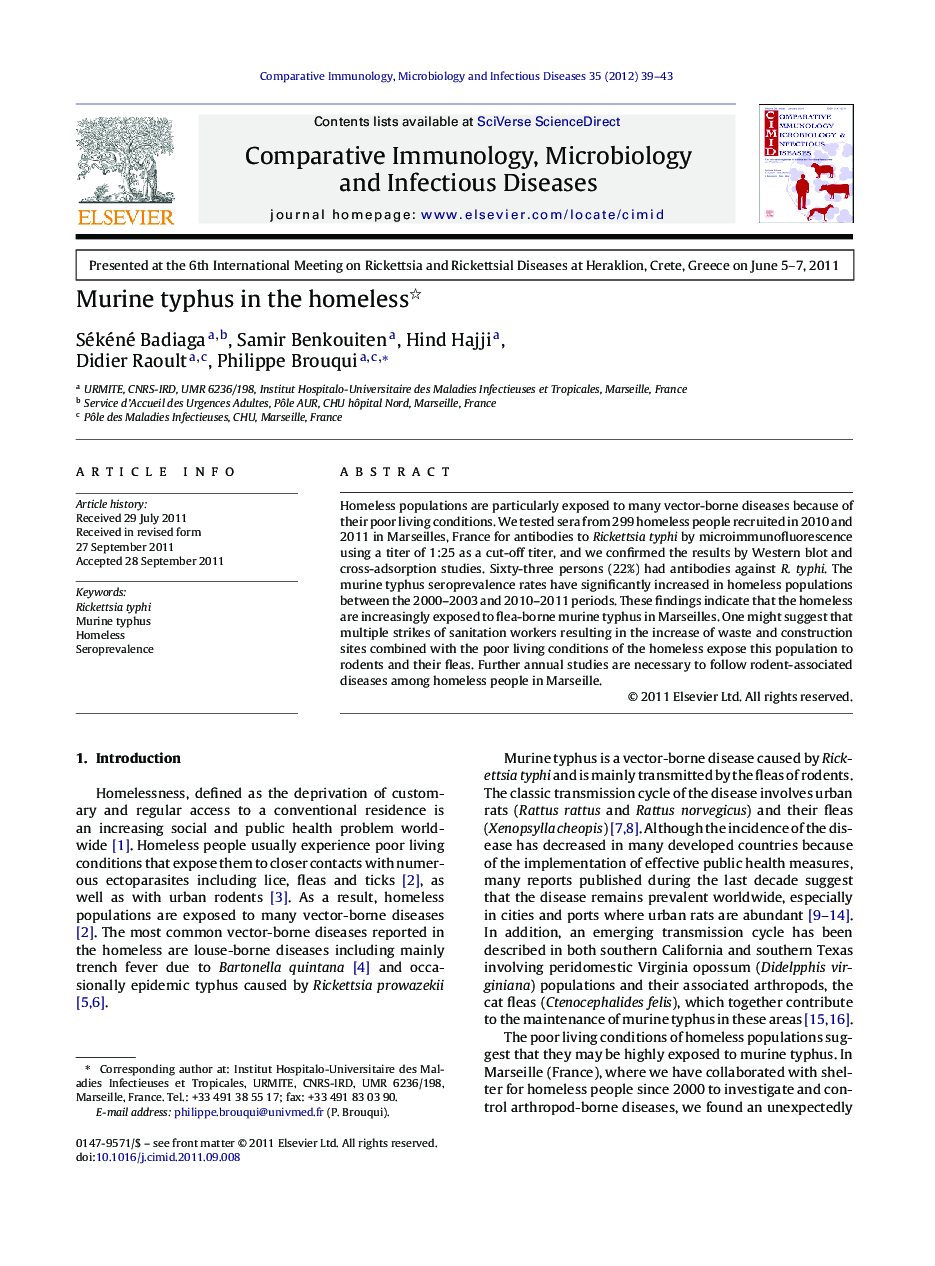| Article ID | Journal | Published Year | Pages | File Type |
|---|---|---|---|---|
| 10971366 | Comparative Immunology, Microbiology and Infectious Diseases | 2012 | 5 Pages |
Abstract
Homeless populations are particularly exposed to many vector-borne diseases because of their poor living conditions. We tested sera from 299 homeless people recruited in 2010 and 2011 in Marseilles, France for antibodies to Rickettsia typhi by microimmunofluorescence using a titer of 1:25 as a cut-off titer, and we confirmed the results by Western blot and cross-adsorption studies. Sixty-three persons (22%) had antibodies against R. typhi. The murine typhus seroprevalence rates have significantly increased in homeless populations between the 2000-2003 and 2010-2011 periods. These findings indicate that the homeless are increasingly exposed to flea-borne murine typhus in Marseilles. One might suggest that multiple strikes of sanitation workers resulting in the increase of waste and construction sites combined with the poor living conditions of the homeless expose this population to rodents and their fleas. Further annual studies are necessary to follow rodent-associated diseases among homeless people in Marseille.
Related Topics
Life Sciences
Agricultural and Biological Sciences
Animal Science and Zoology
Authors
Sékéné Badiaga, Samir Benkouiten, Hind Hajji, Didier Raoult, Philippe Brouqui,
